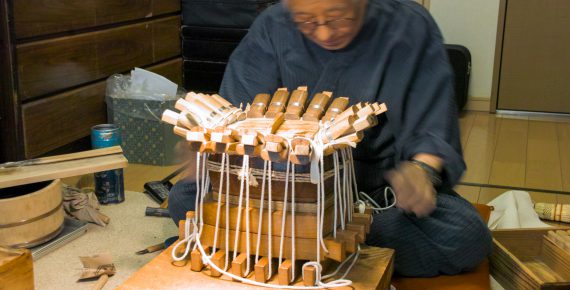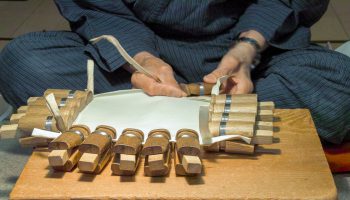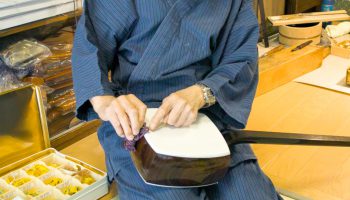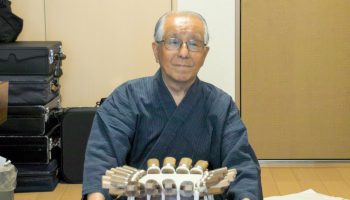Tokyo Shamisen [ Three-Stringed Japanese Musical Instrument ]
Takeuchi Yasuo

The Shamisen (Three-Stringed Japanese Instrument) has an origin from the Chinese Sangen, was first introduced to the Ryukyu Kingdom at the end of the 14th century. After that, it was imported to Sakaiminato city in the Tottori prefecture at the end of the Muromachi period and has spread throughout Japan from there. It is said, that the foundation of the Shamisen music in Japan was completed around the Kanei era along with the current form of the Tokyo Shamisen was established and became widely popular among people. The Shamisen is mainly known as the instrument played in the performance of Nagauta (Long Song) and Kouta (Short Song) which accompanies the Kabuki Theater.
At the Tokyo Shamisen Takeuchi Shamisen Shop, is where the manufacturing of Tokyo Shamisen happens. By Yasuo Takeuchi which is a “Sangenshi”, a title used for a craftsman who makes shamisen, for 60 years. He was selected as an outstanding skilled worker by the Governor of Tokyo (“Tokyo-Meister”), a Traditional craftsman of Tokyo, and also an outstanding skilled worker in the Taito Ward of Tokyo. Moreover, he was certified as a Contemporary Master Craftsman from the Minister of Health, Labor and Welfare in 2013.
In the past, there were 28 Shamisen and Koto shops in the Asakusa area but now, only 2 shops remain. This shop also has no successor so it might come to an end in Takeuchi’s generation. In addition to the lacking of craftsman, materials for making shamisen and good quality ones are also extremely expensive. Therefore, Shamisen becomes a high valuable crafts work. The Shamisen’s materials are Kouki (Redsander Wood) grown in India, Shitan (Rosewood) and Karin (Chinese Quince) grown in Thailand and Myanmar, domestic oak and mulberry trees, also animals skin, thread and ivory. Shamisen is made by assembling these materials all together. “The last process which assembles various materials from around the world and parts made by other craftsman is a Shamisen craftsman’s work” said Takeuchi. Since it is really important to test the sound of the Shamisen during the process again and again while continuing the work, the craftsman needs many years of experiences and intuition. The Shamisen is gently made by hands that attracts listeners with its deep and weighted tones.
Takeuchi Shamisen Shop
Address: 4-21-3 Higashiueno, Taito-ku
TEL: 03-3844-8360



